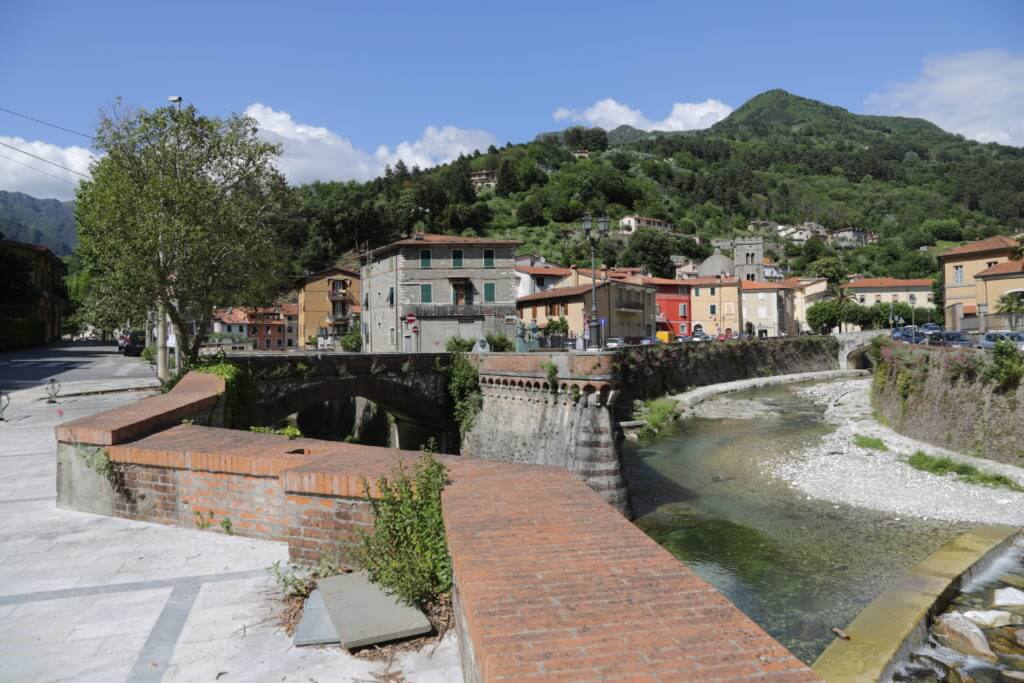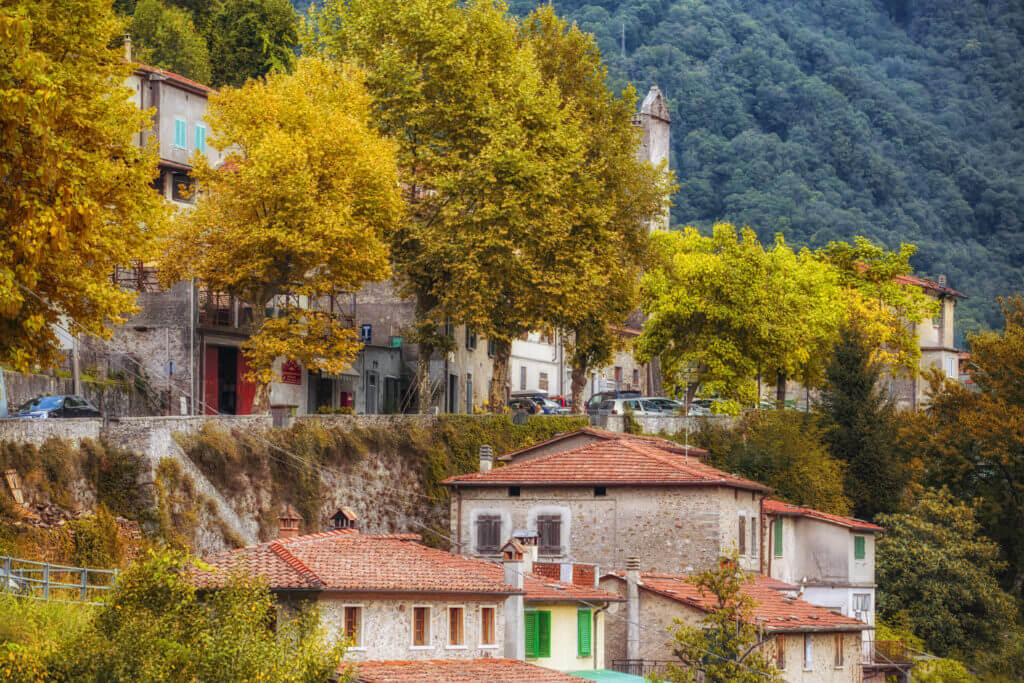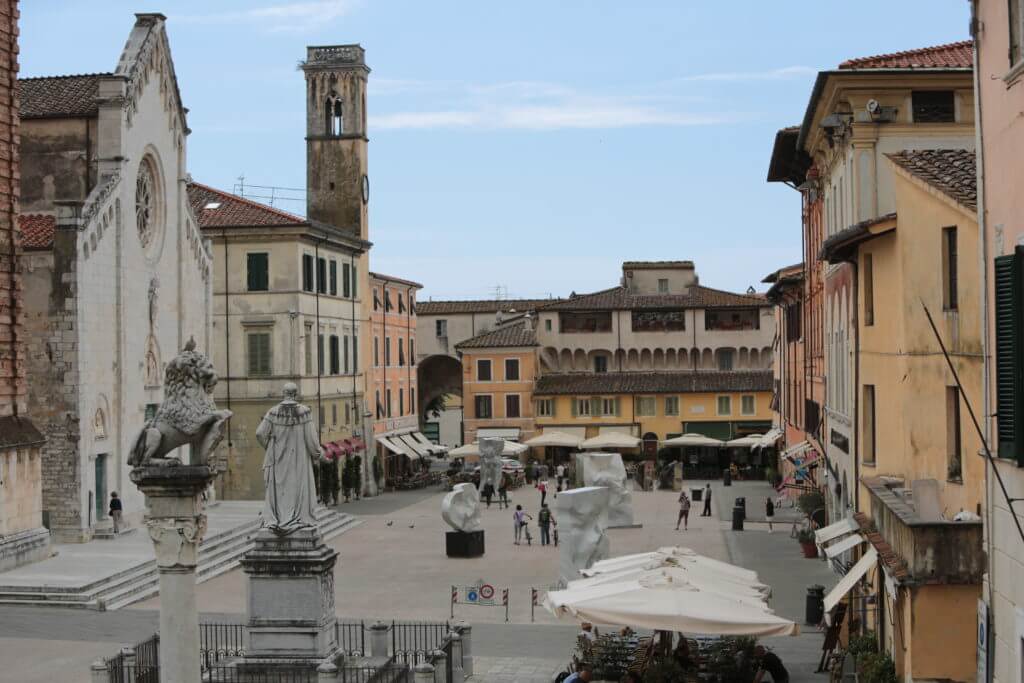Historic Versilia
Historic Versilia
SERAVEZZA

www.comune.seravezza.lucca.it
www.prolocoseravezza.it
Tourist Information Office, phone: +39 0584 757325
Seravezza is located about 4 kilometers from Forte dei Marmi, at the confluence of two torrents, the Serra and the Vezza. From the center of Forte dei Marmi, the “di Marina” provincial road (SP9) takes you there in just a few minutes. Seravezza is a UNESCO World Heritage Site: its Palazzo Mediceo, with its gardens and the grand-ducal stables, is one of Tuscany’s 12 Medici villas, a Medici family residence in the 1500s and today a cultural events venue (www.palazzomediceo.it).
The territory of the municipality of Seravezza embraces a great variety of landscapes: the plains, with the localities of Querceta and Ripa and Seravezza itself; and the mountainous portion, peppered with small villages with long histories, such as Fabiano, Giustagnana, Basati, and Minazzana. Of especial note, the Azzano locality, shadowed by the Apuan Alps’ Monte Altissimo peak. The village is the site of an ancient church with, on its facade, a sculpted rose window attributed to Michelangelo Buonarroti, who was in this area in 1518 to select marbles for statues commissioned of him by Pope Leo X Medici.
For sports lovers seeking relaxing alternatives to the beach, Seravezza and Upper Versilia offer numerous opportunities for activities for families, walking excursions, hikes and treks, and mountaineering at all levels of difficulty, and such other sports as biking, mountain-biking, horseback riding and sports fishing.
STAZZEMA

The territory of Stazzema is surrounded on all sides by the Apuan Alps. From its outlying localities, in the hills and on the mountain slopes, sweeping panoramas tease visitors’ eyes. The Comune di Stazzema manages the Parco Nazionale della Pace (Peace Park), headquartered in the Sant’Anna locality (www.santannadistazzema.org), sadly famous for the vicious Nazi massacre of 12 August 1944.
The Pruno, Volegno, and Cardoso localities are unstinting with their lookouts toward the magnificent peaks of Monte Pania della Croce, Monte Forato, Monte Corchia and Monte Procinto. Streams, rills and tumbling torrents descend the slopes to pleasantly characterize the villages and the surrounding woodlands and forests, marvelous sites to visit by car, by bike, and above all on foot, on wide, well-marked trails. At the summer solstice, the sun aligns perfectly with the Monte Forato arch and can be seen through it; this stunning phenomenon is visible from the Forte dei Marmi beach. Under Monte Corchia, explore the splendid karst caves with their speleothems (stalagmites, stalactites, flowstones, and many more) in perfect safety on a two-kilometer underground trail.
PIETRASANTA

Pietrasanta boasts an international reputation as a bronze- and marble-working center where artists from all over the world come to learn about the local artisans’ techniques and avail themselves of their expertise. The medieval town was founded in 1255. Poet Giosuè Carducci was born in the Valdicastello locality in 1835. In Pietrasanta’s historic center, don’t miss the beautiful cathedral of San Martino (13th century) and its square; the deconsecrated church of Sant’Agostino, today a stimulating venue for temporary art exhibitions; the Torre Civica (or Torre dell’Orologio, clock tower); and the Rocca di Sala fortress, above the town. Especially in summer, the central square is a magical open-air museum, with exhibitions of monumental sculptures and works of art. The Rocchetta Arrighina, with its crenellated walls, dominates the piazza from its position alongside the Porta a Pisa city gate, the portal to Marina di Pietrasanta. This well-known beach resort is a paradise of small villas, on what is basically a grid layout, immersed in the green of the pinewood. Toward its northern end, the La Versiliana park is the setting for the villa name where poet Gabriele D’Annunzio spent his Versilian summers in the early 1900s. The villa and the open-air theater in the park are now venues for summer events of various types and theater performances (www.versilianafestival.it).









